Renault R-Link: Everything you need to know
Renault's revolutionary Android-based in-car tech tested
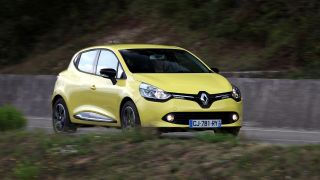
Ever since Renault announced its intention to base its next infotainment platform on Android, we've been busting to give R-Link a go. And now we have. But is it any good?
Firstly, we should qualify everything that's about to follow with the proviso that R-Link isn't quite finalised. It's currently going through final testing and validation so things could change.
However, what we've seen in the new Clio is certainly representative in terms of look and feel if not full functionality. What's more, we've got a much better idea of Renault's intentions and attitudes when it comes to R-Link.
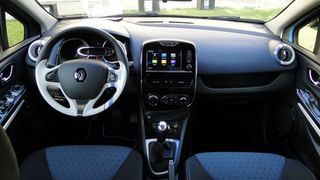
In other words, how does R-Link fit into the broader in-car infotainment landscape, what's it like to use, how does it compare to and perhaps function with more conventional Android devices, like phones and tablets? We can begin to answer questions like these.
Android answers
First up, in the new Clio R-Link is presented via a 7-inch touchscreen mounted in what Renault is calling a "tablet". That's actually a little misleading.
What we're really dealing with is a conventional infotainment screen located front and centre in the dash. The binnacle or pod it's mounted in has a somewhat floating appearance. But it's entirely fixed and houses various other functions, including ventilation.
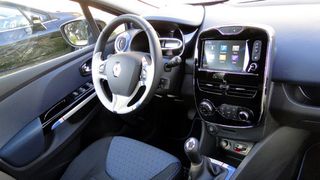
Anyway, fire up R-Link and you're initially presented with a default home screen with six icons: Navigation, Multimedia, Phone, Vehicle, Services and System.
Get daily insight, inspiration and deals in your inbox
Get the hottest deals available in your inbox plus news, reviews, opinion, analysis and more from the TechRadar team.
Poke and a prod
The screen itself is of tolerable quality and resolution (we're still trying to confirm the pixel count, but subjectively we wouldn't call it HD). Although we haven't had this confirmed, we're sure it's based on resistive rather than capacitive touch technology.
Consequently, you often need to give it a pretty deliberate stab to garner a response. That's the way it rolls with resistive touch - welcome to 2009.
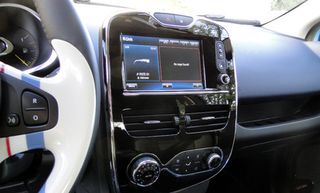
Much of R-Link's functionality mirrors that of more conventional in-car systems. The built-in navigation, the music playback, the trip computer, that sort of thing.
Where things get interesting is when you hit the Services button and access the apps. At launch, Renault reckons around 20 apps will be available. You purchase them via the R-Link app store which you access exclusively in-car.
Android, but not as you know it
To be clear, Android in R-Link form is far removed from Android on your phone. You cannot, for instance, buy an app on your phone and transfer it to R-Link. It's effectively an entirely separate ecosystem.
Intriguingly, there is also no such thing as a free R-Link application, though buyers of R-Link equipped Renaults will get a free "discovery" app pack that lasts for three months.
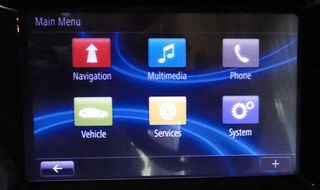
The reasoning is that R-Link does not come with any data charges. It has a built in SIM and 3G connection. But as an end user, you'll never have to pick up the bill.
If you don't install any R-Link apps, that's fine as without apps, there are no internet connected features. But by making all apps come at a price, Renault is able to generate revenue to cover cellular access.
Exactly how this works with an app that doesn't require internet access isn't clear. However, we do know that at launch internet access will be restricted to your home territory or nation. Roaming isn't offered.
Walled garden
It's also worth appreciating that R-Link is in general a much more closed system than you'll be used to with Android. There are some fairly serious safety and security implications of running apps in a car.
Driver distraction is one obvious example. But simply running an unstable app or an app that opens up the car to hackers or malicious code has some pretty terrifying implications.

So, R-Link is very much locked down. Nothing will appear on the app store without thorough validation and Renault will not be providing open access to R-Link's code base.
As for pricing, Renault says apps will start from around four to five Euros and extend up to 50 Euros or more. The only hard example Renault is currently giving is the Coyote Series alerts system which is a partially crowd sourced database of road hazards that plugs into the navigation system.
Setting sights on SYNC
In use, the early versions of R-Link we've tried were not fully functional, but our early impressions are of modest hardware that's not designed to wow with swishy graphics and animations.
Indeed, if you didn't know it was Android based, you probably wouldn't have guessed. Perhaps the closest competitor system is Ford SYNC, which offers a pretty similar overall feature set but more contemporary graphics.

In fact, at this early stage, it's not entirely clear what advantages, if any, Renault is getting from using R-Link over, say, Windows CE. Renault confirmed to TechRadar, for instance, that R-Link will not sync in any special way or offer extended functionality with Android handsets.
Putting a price on technology
More generally, the problem for Renault is going to be a relatively tiny installed base. It reckons just 20 per cent of Clio buyers will tick the R-Link box.
Incidentally, Renault isn't ready to reveal how much that box tick will cost, but emphasises that it wants to makes R-Link broadly accessible – read cheap. Whatever the price, you're talking about a version of Android that will only appear on a fraction of one auto manufacturer's cars.

If Microsoft is having trouble getting developers to code apps for Windows 8, what hope for Renault? It says it is working proactively to bring developers on board and has a Paris based incubator to help do just that.But we foresee a major challenge so long as R-Link remains a walled garden.
Promising package
If all that sounds a little negative, we remain essentially well disposed towards R-Link and indeed the new Clio. The latter is a cracking little car, especially in TCe 90 trim with zingy three-cylinder 0.9l petrol engine.

Moreover, even if all of our fears regarding R-Link's limitations come true, it will still be a big step forward for Renault and in with a fighting chance of being one of if not the best in-car systems in the mainstream hatchback segment.
But what R-Link doesn't look like is the really dramatic step change for the car industry that its Android roots might lead you to expect.
Technology and cars. Increasingly the twain shall meet. Which is handy, because Jeremy (Twitter) is addicted to both. Long-time tech journalist, former editor of iCar magazine and incumbent car guru for T3 magazine, Jeremy reckons in-car technology is about to go thermonuclear. No, not exploding cars. That would be silly. And dangerous. But rather an explosive period of unprecedented innovation. Enjoy the ride.
Most Popular


